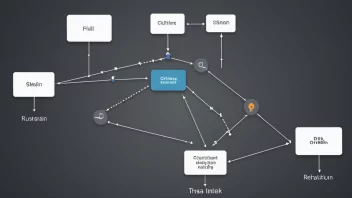In the ever-evolving landscape of digital security, cryptographic hashing algorithms have emerged as a cornerstone of trust and integrity, particularly in the realms of blockchain technology, data integrity, and password storage. These algorithms transform input data of any size into a fixed-size string of characters, which appears random and is typically represented in hexadecimal format. As the backbone of secure transactions and data verification, cryptographic hashes ensure that any alterations to the input data are easily detectable, making them essential for maintaining security in various applications. This article delves into the intricacies of cryptographic hashing algorithms, their applications, and their significance in contemporary digital practices.
Understanding Cryptographic Hashing Algorithms
Cryptographic hashing algorithms are mathematical functions that convert data into a fixed-length hash value. These algorithms possess several key properties that make them particularly suitable for security applications:
- Determinism: The same input will always produce the same hash output.
- Quick Computation: The hash value can be computed quickly for any given input.
- Pre-image Resistance: It should be computationally infeasible to reverse-engineer the original input given its hash value.
- Small Changes Affect the Output: Even a tiny change in the input should produce a drastically different hash.
- Collision Resistance: It should be improbable to find two different inputs that produce the same hash output.
Common cryptographic hashing algorithms include SHA-256, SHA-3, and MD5, each varying in terms of security, speed, and computational efficiency. SHA-256, part of the Secure Hash Algorithm 2 family, is widely used in blockchain, while MD5, though once popular, is now considered less secure due to vulnerabilities.
Applications in Blockchain Technology
One of the most significant applications of cryptographic hashing algorithms is in blockchain technology. Blockchains rely on these algorithms to secure transactions and maintain the integrity of data across distributed networks. Each block in a blockchain contains a hash of the previous block, along with a timestamp and transaction data, forming a chain of blocks that is immutable and tamper-proof.
The process begins when a transaction is initiated. Once verified, it is grouped with other transactions into a block. The block's header includes the hash of the previous block and a nonce value, which is a number used once to ensure the hash meets the network's requirements. Miners then compete to solve a complex mathematical problem that involves finding a nonce that produces a hash below a certain target. This process, known as proof-of-work, secures the blockchain and prevents double-spending.
Data Integrity and Verification
Beyond blockchain, cryptographic hashing algorithms play a crucial role in data integrity verification across various applications. Hash functions are used to create digital signatures and checksums, enabling users to verify that data remains unchanged during storage or transmission. For example, when transmitting files over the internet, a hash of the original file is generated and sent alongside it. The recipient can then compute the hash of the received file and compare it to the original hash. If the two hashes match, it confirms that the file has not been altered.
In database management systems, hashing algorithms help ensure the integrity of stored data. By applying a hash function to sensitive data, organizations can detect unauthorized changes, whether due to accidental errors or malicious attacks.
Password Storage and Security
Another critical application of cryptographic hashing algorithms is in password storage. Instead of storing user passwords in plain text, which is highly insecure, organizations use hashing algorithms to convert passwords into hash values. When a user attempts to log in, the system hashes the input password and compares it to the stored hash. If they match, access is granted.
To enhance security further, techniques such as salting are used. A salt is a random value added to the password before hashing, which prevents attackers from successfully using precomputed hash tables (rainbow tables) to crack passwords. By storing unique salts for each user alongside their hashes, even identical passwords will yield different hash values, significantly increasing security.
Case Studies
Several high-profile incidents have underscored the importance of cryptographic hashing algorithms in security. One notable case is the 2014 breach of the Sony PlayStation Network. Attackers accessed millions of user accounts, primarily because passwords were stored in an insecure manner. Had Sony employed robust hashing algorithms, including salting, the attackers would have faced a significantly more challenging task in accessing user accounts.
In contrast, the implementation of hashing algorithms in blockchain systems like Bitcoin has proven effective in maintaining security. The decentralized nature of blockchain combined with the properties of cryptographic hashes has made it nearly impossible for malicious actors to alter transaction data without being detected, reinforcing trust in the system.
Conclusion
Cryptographic hashing algorithms are indispensable in today's digital ecosystem, safeguarding data integrity, enhancing password security, and underpinning the very foundations of blockchain technology. Their unique properties provide a reliable means of ensuring that data remains unchanged and secure, whether in transactions or data storage. As cyber threats continue to evolve, the importance of robust cryptographic hashing algorithms will only grow, highlighting the need for continuous advancements in cryptographic methods to protect sensitive information in an increasingly digital world.






